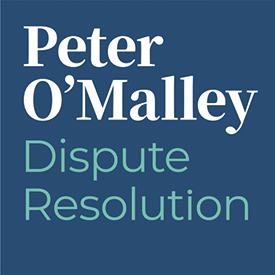I recently had the opportunity of re-reading ‘The Checklist Manifesto – How to get things right’ written by Atul Gawande back in 2009. I first read this remarkably simple and easy to read book about ten years ago when it was first published. Gawande argues that ‘The volume and complexity of what we know has exceeded our individual ability to deliver its benefits correctly, safely, or reliably. Knowledge has both saved us and burdened us.’
Gawande identifies a problem that affects virtually every aspect of the modern world. How can professionals deal with the increasing complexity of their responsibilities and at the same time avoid making mistakes? He then considers mistakes under two categories: errors of ignorance (mistakes we make because we don’t know enough), and errors of ineptitude (mistakes we made because we don’t make proper use of what we know). Gawande then advises that failure in the modern world is really about the second of these categories of mistake, suggesting that the remedy can be found in the humblest and simplest of techniques: the checklist.
Gawande argues that most of today’s work has entered a checklist phase. Substantial parts of what decision makers do are now too complex for them to carry out reliably from memory alone. Decision makers work in an environment that is both rigid in procedure and dynamic in evolving precedent and commentary. Yet, there are few practitioners who adopt the use of a checklist, possibly on the basis that the work being undertaken is considered to be too complicated to be reduced to such a simple reference.
But, in a complex environment, experts are up against two main difficulties. The first is the fallibility of human memory and attention, especially when it comes to the mundane, routine matters that are easily overlooked under the strain of more pressing events. The second difficulty, just as insidious, is that people can lull themselves into missing steps even when they remember them. This is often on the basis that in complex processes certain steps don’t always matter, after all ‘This has never been a problem before’, until one day it is. A checklist can provide protection against such failures by reminding us of the minimum necessary steps and to make these steps explicit.
It seemed to me on reflecting on what Gawande had to say that dispute resolution decision making in the construction industry is one of those activities that could benefit from a checklist to assist in the process. Adjudication provided for by the Construction Contracts Act 2013 and the supporting Code of Practice Governing the Conduct of Adjudications 2016 is directed by a process that seeks primarily to preserve natural justice.
Any deviation from this process, as can be seen from the development of adjudication in other jurisdictions, is fraught with danger where mistakes can all too easily be made. It has been extensively shown that there are many mistakes and errors that can undermine the effectiveness and enforceability of a decision, thereby resulting in a fundamental disservice to the parties in dispute.
The adjudication process can be divided into discreet headings, the enquiry, the appointment, receipt of the referral, receipt of the response, receipt of the reply, the oral hearing, working through the decision and then finally issuing the decision. Under each of these headings it is possible to detail various points that are critical to the success of the process. It was these thoughts that prompted me to develop ‘Acting as an Adjudicator: 99 point checklist’ initially for my own use but I then realised that the checklist could assist others either as a decision maker or as a party to the process. The checklist, which I hope you find useful as a quick reference tool, has been designed to be printed out on each side of an A4 sheet of paper, and can be accessed through the below link:
